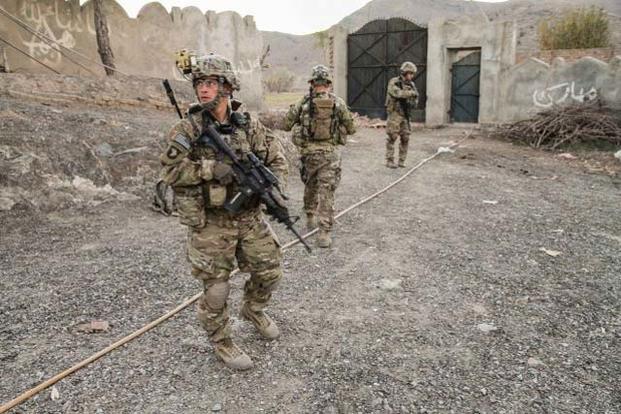The U.S. Army announced Tuesday it will deploy about 1,400 soldiers from the 101st Airborne Division (Air Assault), at Fort Campbell, Kentucky, to Afghanistan to participate in counter-terrorist operations.
The Rakkasans from 3rd Brigade Combat Team will deploy this fall to support Operation Freedom's Sentinel -- the U.S. counter-terrorism operation against the remnants of al-Qaida, an emerging offshoot of the Islamic State of Iraq and Syria, or ISIS, and other terror groups, according to an Army press release.
"From hunting Al Qaeda and Taliban forces during Operation Anaconda in 2002, to performing the advise-assist mission in 2014-15, the soldiers of the 3rd Brigade Combat Team have been nothing short of exceptional while supporting operations in Afghanistan over the years," Brig. Gen. Scott E. Brower, 101st Airborne's acting senior commander, said in the release.
"The Rakkasans are trained, well-led, and prepared to accomplish any mission given to them while supporting Operation Freedom's Sentinel," he added.
In late July, the Army announced that it will send 800 soldiers from 1st Combat Aviation Brigade, 1st Infantry Division, at Fort Riley, Kansas, to Afghanistan to support Freedom's Sentinel as well.
The aviation brigade will deploy with aircraft including AH-64 Apache attack helicopters and UH-60 Black Hawk utility helicopters sometime before October.
President Barack Obama in July announced a change in plans for U.S. troop levels in Afghanistan when he said 8,400 American service members would stay in the country into next year, leaving it up to his potential successor Donald Trump or Hillary Clinton to decide on the size of the military footprint there.
The president initially planned to reduce the U.S. troop presence in Afghanistan to 5,500 before he left office but changed course after a recommendation from Army Gen. John Nicholson, the top U.S. commander in country. The current authorized level of U.S. troops in Afghanistan through the rest of the year stands at 9,800.
The U.S. troops are split between two missions that will continue -- NATO's Resolute Support mission to advise Afghan security forces and the separate Freedom's Sentinel.
-- Matthew Cox can be reached at matthew.cox@military.com.



























